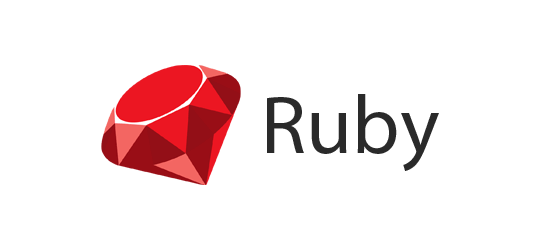What Is Ruby Programming Language

What Is Ruby – A Guide for Beginners
Introduction
Ruby is a dynamic, object-oriented programming language that is known for its simplicity and readability. It was created in the mid-1990s by Yukihiro Matsumoto, also known as “Matz,” with the goal of making programming more enjoyable and productive for programmers.
What is Ruby Programming Language?
Ruby is a high-level programming language that is designed to be easy to understand and write. It is known for its elegant and concise syntax, which allows developers to express their ideas in a natural and intuitive way. Ruby is also known for its flexibility and scalability, making it suitable for a wide range of applications, from web development to scientific computing.
Why should beginners learn Ruby?
For beginners, Ruby is an excellent language to start their programming journey. Here are a few reasons why:
-
- Readability: Ruby’s syntax is designed to be human-like, making it easier for beginners to understand and write code. This helps in reducing the learning curve and allows beginners to focus on the logic of their programs.
-
- Community: Ruby has an active and supportive community of developers who are always ready to help beginners. There are numerous online tutorials, forums, and resources available, making it easy to find solutions to common problems.
-
- Versatility: Ruby can be used for a wide range of applications, from building websites to creating mobile apps. This versatility allows beginners to explore different areas of programming and find their niche.
-
- Rails Framework: Ruby on Rails, commonly known as Rails, is a web application framework written in Ruby. It simplifies the development process by providing a set of conventions and tools. Learning Ruby opens up opportunities to work with the popular Rails framework, which is widely used in the industry.
How to get started with Ruby?
If you’re a beginner and want to get started with Ruby, here are some steps to follow:
-
- Install Ruby: The first step is to install Ruby on your computer. You can download and install the latest version of Ruby from the official website (ruby-lang.org). There are also package managers available, such as rbenv and rvm, that make it easy to manage multiple Ruby versions.
-
- Choose an Editor: Next, choose an editor or integrated development environment (IDE) to write your Ruby code. Some popular choices include Visual Studio Code, Sublime Text, and RubyMine. These editors provide syntax highlighting, code completion, and other features that can enhance your coding experience.
-
- Learn the Basics: Start by learning the basics of Ruby, such as variables, data types, and control flow. There are plenty of online resources, such as tutorials, books, and interactive coding platforms, that can help you learn the fundamentals of the language.
-
- Practice and Explore: Once you have a grasp of the basics, practice writing code and work on small projects. This will help you gain hands-on experience and reinforce your understanding of Ruby concepts. Explore different libraries and frameworks to see how Ruby can be used in various contexts.
Ruby Syntax
One of the standout features of Ruby is its intuitive and elegant syntax. The language is designed to be easy to read and write, making it ideal for both beginners and experienced programmers. With its object-oriented approach, Ruby allows developers to create efficient and organized code that is easy to maintain and debug.
To create a simple “Hello, World!” program in Ruby, you would write:
puts "Hello, World!"
In this example, the puts method is used to print the string “Hello, World!” to the console. The syntax is clean and concise, making it easy to understand even for those new to programming.
What Makes Ruby’s Syntax Unique?
- Readable Code: Ruby’s syntax is designed for human readability, making it easier to understand and maintain.
- Dynamic Typing: You don’t need to specify variable types, allowing for more flexible coding.
- Method Chaining: Ruby allows methods to be chained together, enhancing code expressiveness.
Ruby in Action: Web Development with Ruby on Rails
One of the most popular uses of Ruby is in web development, particularly with the Ruby on Rails framework. Rails, as it’s commonly known, is a powerful web application framework written in Ruby. It follows the principle of “convention over configuration,” which means it makes assumptions about what you want to do and how you’ll do it, saving you from having to specify every little detail.
Why Use Ruby on Rails?
- Rapid Development: Rails streamlines the development process, allowing for quick prototyping and iteration.
- Convention over Configuration: Less time configuring means more time building.
- Community Gems: Rails has a vast ecosystem of gems (libraries) that extend its functionality.
- Scalability: Many large-scale web applications, such as Airbnb and GitHub, are built with Rails.
See Also: Understanding Ruby On Rails Framework
Programmer Examples Of How To Use The Ruby Programming Languages
Hello, Ruby!
# This is a simple Ruby program that prints “Hello, Ruby!” to the console.
puts “Hello, Ruby!”
Explanation:
#is used for comments in Ruby. Anything after#on a line is considered a comment and is ignored by the interpreter.putsis a method in Ruby used to output text to the console."Hello, Ruby!"is a string, a sequence of characters enclosed in double quotes. This is what will be printed to the console.
Example 2: Variables and Interpolation
# Define a variable named ‘name’ and assign it the value “Alice”
name = “Alice”
# Use string interpolation to incorporate the value of ‘name’ into the output
puts “Hello, #{name}!”
Explanation:
name = "Alice"creates a variable namednameand assigns it the value"Alice". In Ruby, variables do not have a specific type; they dynamically adapt to the type of value assigned to them."Hello, #{name}!"uses string interpolation to embed the value of thenamevariable within the string. When Ruby sees#{}, it evaluates the expression inside the braces and replaces it with the result.
Example 3: Arrays and Loops
# Define an array of fruits
fruits = [“Apple”, “Banana”, “Orange”]
# Iterate through each fruit in the array and print it
fruits.each do |fruit|
puts “I love #{fruit}s!”
end
Explanation:
fruits = ["Apple", "Banana", "Orange"]creates an array namedfruitswith three elements..eachis an iterator method in Ruby used to loop through each element of an array.do |fruit|starts a block of code wherefruitis the block variable that represents each element in the array during iteration.puts "I love #{fruit}s!"uses string interpolation to print each fruit with “s” added to the end. Theeachloop will go through each fruit in the array and execute this line of code.
Example 4: Conditional Statements
# Define a variable ‘temperature’
temperature = 25
# Check if the temperature is above 30 degrees
if temperature > 30
puts “It’s hot outside!”
elsif temperature > 20
puts “It’s warm.”
else
puts “It’s cold.”
end
Explanation:
temperature = 25assigns the value25to the variabletemperature.- The
if,elsif, andelsekeywords are used for conditional branching in Ruby. if temperature > 30checks if the temperature is greater than 30. If true, it executes the code block that follows.elsif temperature > 20is an “else if” condition that checks if the temperature is greater than 20 but not greater than 30.elseis the default condition that executes when none of the previous conditions are met.
Example 5: Methods
# Define a method called ‘square’ that takes one argument ‘num’
def square(num)
# Multiply ‘num’ by itself and return the result
num * num
end
# Call the ‘square’ method with argument 5 and print the result
puts “The square of 5 is #{square(5)}”
Explanation:
def square(num)defines a method namedsquarethat takes one argumentnum.num * numis the calculation inside the method. It multipliesnumby itself, effectively squaring it.- The
endkeyword closes the method definition. puts "The square of 5 is #{square(5)}"calls thesquaremethod with5as the argument. The result ofsquare(5)(25) is then interpolated into the string and printed.
These examples should give you a good starting point for understanding Ruby syntax and basic programming constructs.
Ruby vs. Python: A Comparison
It’s impossible to talk about Ruby without mentioning Python, another hugely popular programming language. While both have their strengths, they also have distinct differences.
How Do Ruby and Python Compare?
- Syntax: Ruby’s syntax is often seen as more elegant and readable, while Python aims for simplicity and readability.
- Community: Both languages have vibrant communities, but Ruby’s is known for its friendliness and enthusiasm.
- Use Cases: Ruby is often favored for web development, while Python is widely used in scientific computing, data analysis, and machine learning.
The Future of Ruby: What’s Next?
As of the latest version, Ruby 3.3, the language continues to evolve. With each release, improvements are made to performance, syntax, and usability. Additionally, the Ruby community remains active, ensuring that the language stays relevant and up-to-date.
What’s New in Ruby 3.3?
- Performance Enhancements: Ruby 3.3 introduces optimizations to speed up code execution.
- Improved Concurrency: With the introduction of Guilds, Ruby aims to make concurrent programming easier.
- Syntax Improvements: Small tweaks to the syntax make Ruby code even more elegant.
Why Ruby?
In conclusion, Ruby is more than just a programming language—it’s a community, a philosophy, and a powerful tool in the hands of developers. Whether you’re building web applications, scripting, or diving into object-oriented programming, Ruby has something to offer. So, the next time you’re considering which language to learn or use for your project, remember the artful language that is Ruby.
Key Takeaways:
- Ruby is a versatile, object-oriented programming language designed for developer happiness.
- Ruby on Rails is a popular web framework that simplifies web development.
- Learning Ruby opens doors to web development, scripting, and more.
- Ruby and Python have distinct differences in syntax, community, and use cases.
- Ruby 3.3 brings performance enhancements and improved concurrency to the language.
Conclusion
Ruby is a beginner-friendly programming language that offers simplicity, readability, and a supportive community. Learning Ruby can be a rewarding experience for beginners, as it provides a solid foundation for further growth in the field of programming. So why not give Ruby a try and see where it takes you on your coding journey?
FAQs
Q: What is Ruby programming language?
A: Ruby is a general-purpose programming language that’s often used for web development, data processing, and various other applications. It is known for being a flexible and true object-oriented language.
Q: How is Ruby language like other programming languages?
A: Ruby is an object-oriented scripting language, similar to languages like Perl and Smalltalk. It can be used for multiple programming paradigms, making it a versatile choice for developers.
Q: What are the main features of Ruby?
A: Ruby is known for its elegant syntax, dynamic typing, and automatic memory management. It also supports functional programming and is widely used for web development, especially with the Ruby on Rails web framework.
Q: Why is Ruby considered a great language for web development?
A: Ruby, especially when paired with Rails, is popular for web development due to its simplicity, readability, and the speed at which developers can build applications. It’s a general-purpose language that’s well-suited for building web servers and web applications.
Q: When did Ruby come into existence?
A: Ruby was officially released in the mid-1990s by Yukihiro Matsumoto. Since then, it has gained popularity as a powerful and versatile programming language.
Q: What sets Ruby apart from other programming languages?
A: Ruby is often praised for being a true object-oriented language that prioritizes developer happiness and productivity. It combines the best features of functional and object-oriented programming, making it a unique and highly efficient language.
Q: What are some common uses of Ruby?
A: Ruby is commonly used for web development, web scraping, data processing, and creating general-purpose applications. It is a great language for both beginners and experienced developers due to its simplicity and power.

I am a self-motivated, passionate website designer and developer. I have over ten years of experience in building websites and have developed a broad skill set including web design, frontend and backend development, and SEO.
Using my growing knowledge base I have built my own company (scriptedart.co.uk) creating websites, e-commerce stores and producing custom graphics and web app functionality for a range of local businesses.

